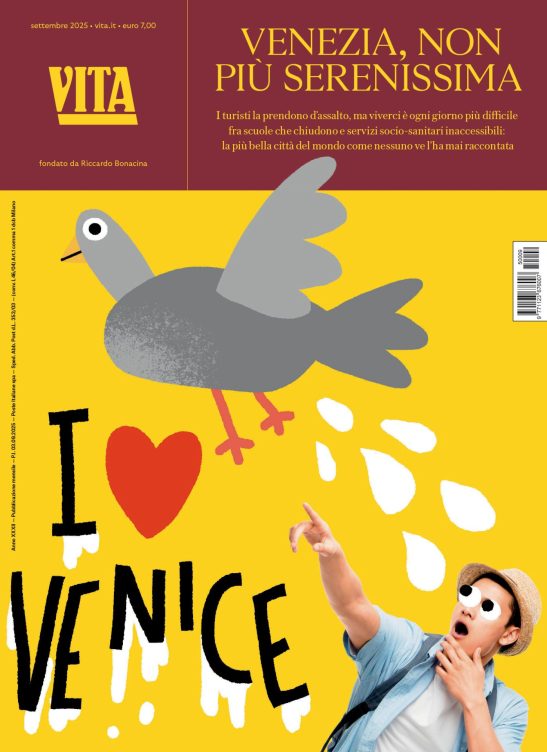Pilaite, a dormitory area located just a few kilometers from Vilnius, Lithuania, has recently become the centre of a unique cultural project. People living in the suburb, where before the project was started there were no cultural centers , are now gathering at BEEPART, an atypical building made with advanced eco-friendly and architectural technologies, to participate to artistic and cultural workshops. These are held both by artists and by the inhabitants themselves, who are therefore also involved in the artistic action.
The BEEPART project (“Be a part”, “bee art” or “bee” in the sense of “common work”) combines art with ecology, and has changed even the physical aspect of the area through environmental education: for example people working at BEEPART are cleaning the forest nearby the centre.
Andrius Ciplijauskas, 34, designer and set designer with extensive experience in the field of architecture, of exhibitions and museums’ design, is the author of this avant-garde project and designed the BEEPART building together with architect Simonas Liuga.
Ideas born at BEEPART are capturing the attention of many subjects, from local institutions to private companies, to professionals, and have also an international reach: for example Andrius Ciplijauskas was one of the speakers at TransEuropaExpress, an international cultural workshop held annually in Rome.
Why did you decide to fund BEEPART?
BEEPART was born from a very simple need: I live in Pilaite, where there were no places for culture, so I decided to establish a small space, a culture point, that is BEEPART. The building was built in 2011.
Besides me, many people are involved in the project: there are both volunteers and many project-based people working at BEEPART. For example, Simonas Liuga, the architect who constructed with me the BEEPART building, is also one of the volunteers taking care of the daily schedule at BEEPART.
What are the peculiarities of the Pilaite area?
The problem of the area is not the level of criminality, which is the same as everywhere in Lithuania . The problem is that we don’t have community and that people do not trust each other. This is common to all post soviet countries, like Latvia and Estonia.
What is the idea of BEEPART?
We believe that culture has to come to dormitory areas to create social bonds and that people have to know culture as closer as it is possible. One of our goals is to bring to BEEPART artists and exhibitions of many different kinds– from films reviews, to community gatherings, to ceramic workshops…
What is the aim of the BEEPART building?
At the very beginning we wanted to create something unusual in Pilaite, so that people would be eager to visit it. And it worked! The main aim of the house though goes much beyond this: the building wants to be an educational tool itself .
The BEEPART building, with its atypical design and innovative solutions, teaches people that these new technologies provide the same comfort as traditional ones. Among the many innovations of the house: the structure of the building is temporary and made of sea containers, which are insulated by straw briquettes ; the building collects rain water and on the roof there is green grass, we have composting toilets and we do separate waste collection. So we have done something already as regards education but we want to continue to experiment eco-friendly and innovative solutions and we also want to continue to educate. For instance we want to install incinerating toilets and solar panels.
To which extent can culture be brought to suburbs?
The main cultural events will always take place in the city centre but it is important that art becomes more accessible to people. Artists are becoming increasingly elitist and distant from people. People don’t go to exhibitions because they don’t understand that kind of art, which they feel distant from them.
BEEPART proposes one of the possible solutions to solve this problem. We ask both local people and professional artists to come exhibit their worksat BEEPART. This way people get to know culture from closer and culture becomes something that they can understand. I think that little by little this education is working.
What is the role of culture in making the Pilaite area revive?
I think it is important to bring culture to the area and to invite people to participate to our workshops. When we arrived there was garbage everywhere. Now there is very little left, because every day we teach people drinking nearby not to throw garbage everywhere, telling them: “You can join us, but please don’t throw any garbage.” I think this is the best security tool, because I believe that only talking to people brings some results.
BEEPART’s website has become the first virtual social art gallery. What does it mean?
People send us their works that they can define as social art and we expose them on our website. The gallery allows socially and artistically minded people to express themselves and to gain visibility in a public space. Works are exhibited in turn on the first page of the website. After being compiled in the gallery, exhibited works will be shown in exhibitions, with the permission of the author.
What is social art for you?
I think it is art which involves people and communities, bringing them together. I also think I will complete this definition over time as we are still discovering it on the field, in Pilaite.
Pictures of the BEEPART building can be watched on Vita Europe’s facebook page.
Vuoi accedere all'archivio di VITA?
Con un abbonamento annuale potrai sfogliare più di 50 numeri del nostro magazine, da gennaio 2020 ad oggi: ogni numero una storia sempre attuale. Oltre a tutti i contenuti extra come le newsletter tematiche, i podcast, le infografiche e gli approfondimenti.

